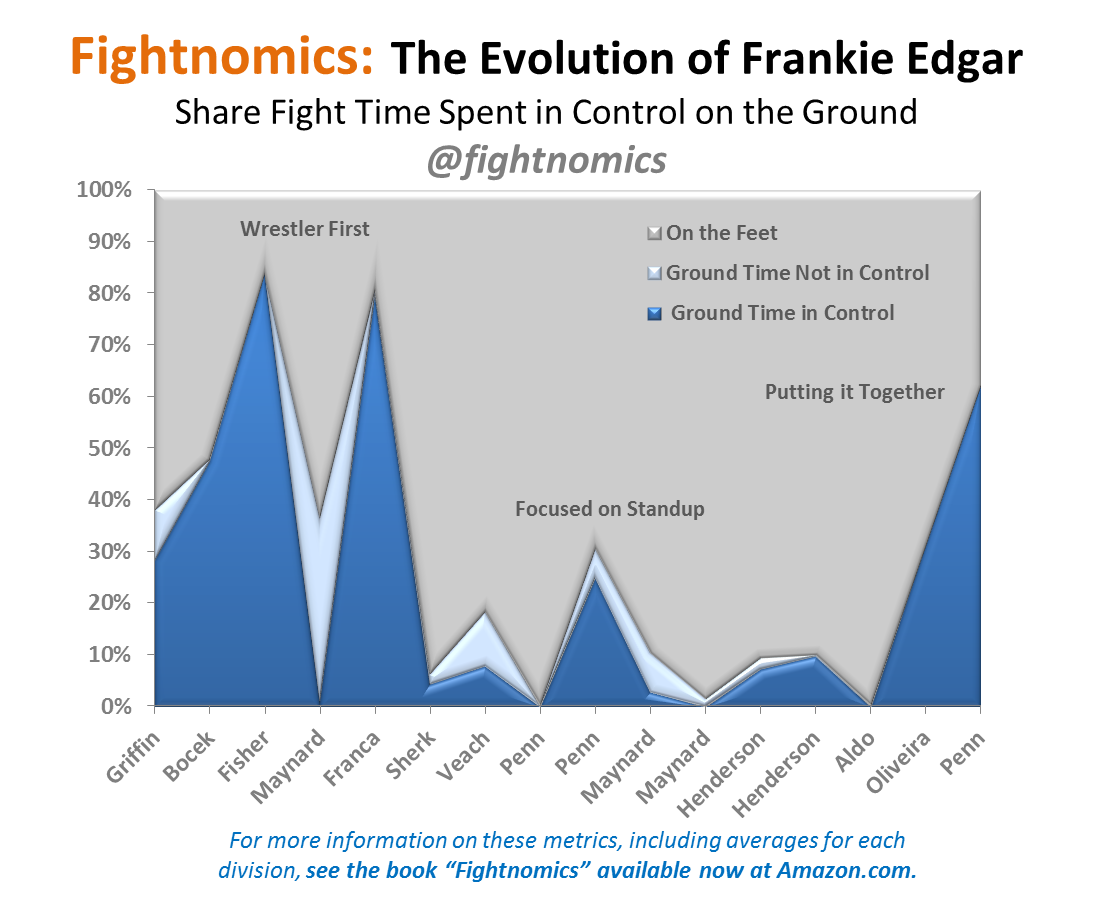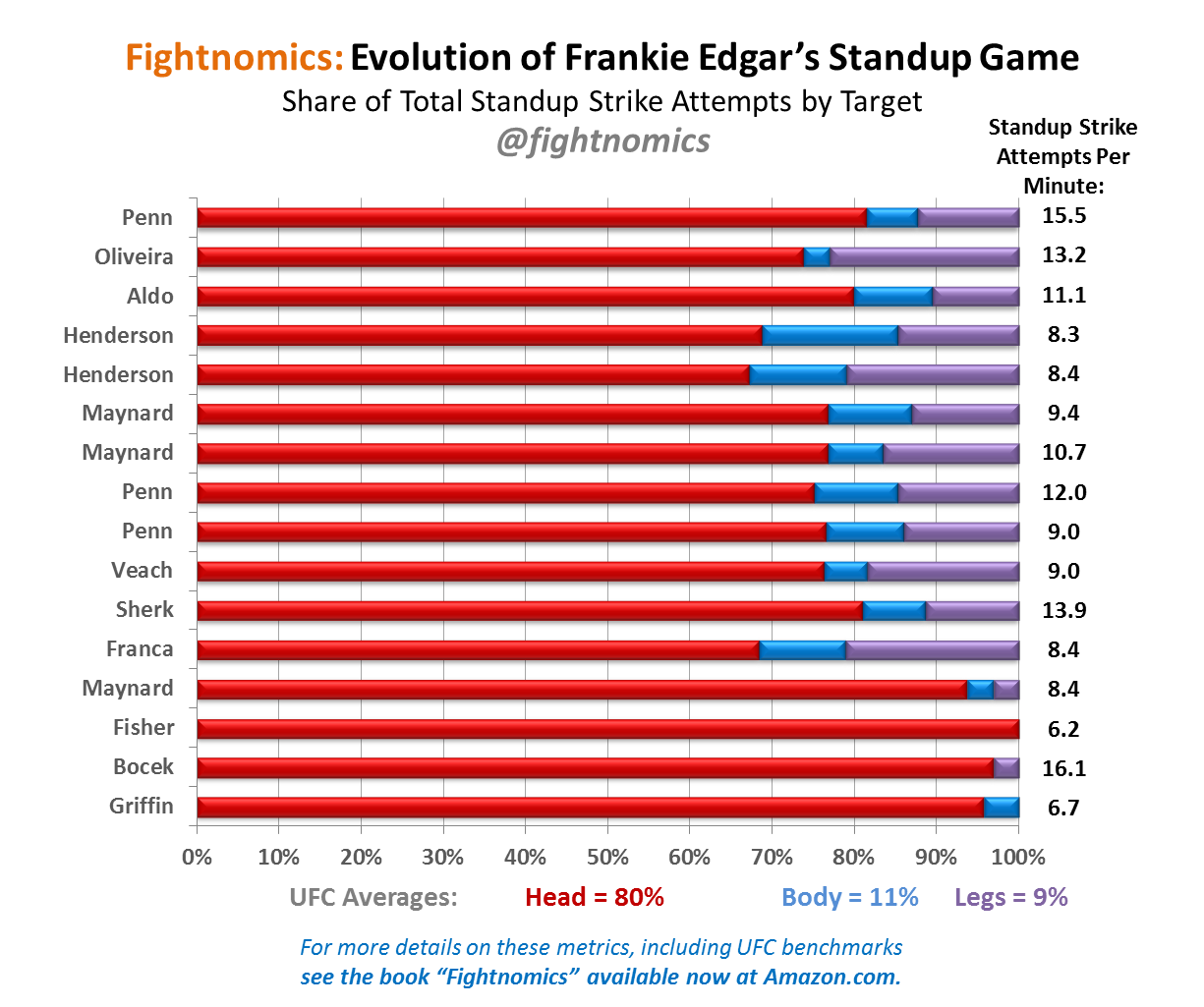By Fightnomics Frankie Edgar has logged some serious minutes in the Octagon. In his UFC career alone, 285.5 minutes to be exact. That’s four hours forty five and half minutes of fight time against UFC-caliber opponents spanning a period of seven and a half years fighting in the that organization. That’s a lot. When Edgar entered the UFC he was a 27-year old 6-0 champion of the Reality Fighting organization, and it’s safe to say that his fight game has changed through the years since. Now in 2014, Edgar has been a Lightweight champion, and Featherweight contender, and has logged an 11-4-1 record at the highest levels of the sport. So let’s take a closer look at how Edgar has evolved his skills and style in the cage over the years.
First, we can actually see the point when Edgar went from being a wrestler-boxer hybrid to becoming a full MMA striker. That point came in his dominating win over Hermes Franca, in a Fight of the Night performance. Edgar went from being a boxer who aimed strikes at the head of opponents over 95% of the time, to a more diverse striker who throws over a quarter of his standing strikes at the body or legs, which is actually above the UFC average for diversity of target selection. Since making this conversion he’s never looked back, and Edgar is now a fully functioning MMA striker who can bang you up with kicks as well as punches. With his improved striking arsenal during the Lightweight 2.0 era, however, it appeared that Edgar actually abandoned his roots as a wrestler. This is fine considering he was largely successful as a champion and title challenger for a period of over two years spanning six consecutive title fights that didn’t include a lot of wrestling. 
But as Robin Black of the Fight Network pointed out in his breakdown of Edgar this week, the lack of ground game may not have been due to diminishing skills. It may have been intentional and strategic. Let’s consider all Edgar’s stats by era.
When Edgar entered his new era of fighting style (Lightweight 2.0), he suddenly dropped the amount of takedowns attempted. More interestingly, his takedown success rate went from well above average to well below average, and that translated to a huge drop in the amount of time he spent on the mat. But why? Had opponents figured out his game? Or, as Black’s theory suggests, was Edgar using takedown attempts as a strategic feint to open up the striking defense of opponents? Only Edgar and his coaches can answer that for sure, but as his standup game continuously improved in terms of pace, cage control and accuracy, Edgar clearly did not rely on his ground game for the later portion of his time at Lightweight. Now that he has dropped a weight class, he’s brought back some of his wrestling to pair with his best striking yet. Fighting in a better sized division means we’ll see Edgar make the most of his potential and he’ll be able to handle opponents more easily on the mat than some of the larger fighters he faced at Lightweight. Edgar has a big challenge in front of him this week in Austin, Texas in the form of #2 ranked Cub Swanson. Swanson needs this win to cement his claim on the next title shot against Jose Aldo. Edgar hopes to derail that train and stay in the title picture. Find out more about MMA statistics, “Fightnomics” the book is now available on Amazon! Follow along on Twitter for the latest UFC stats and MMA analysis, or on Facebook if you prefer.

